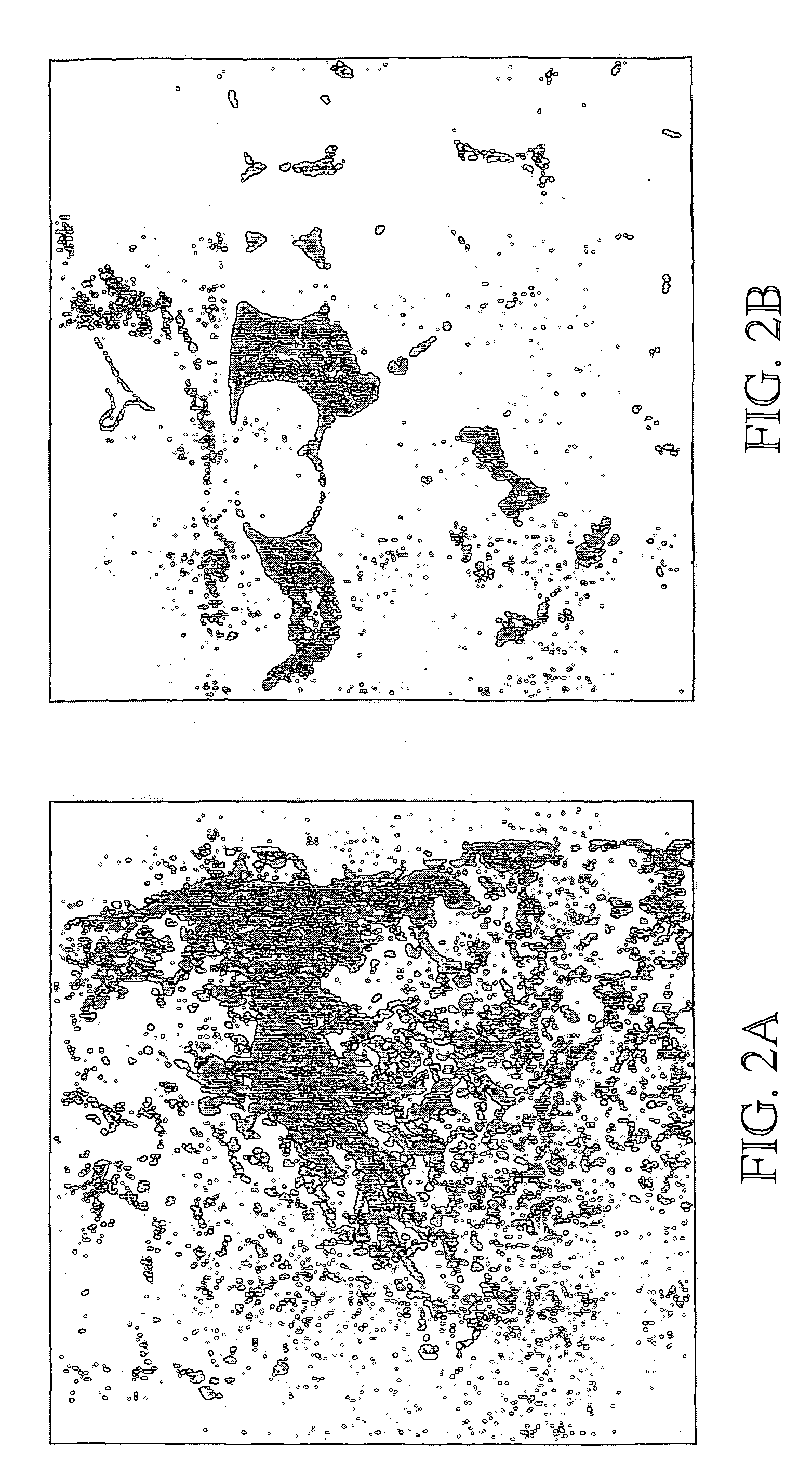Genetic modification of male germ cells for generation of transgenic species and genetic therapies
a technology of genetic modification and transgenic progeny, applied in the field of medical science, can solve the problems of sporadically and unpredictably producing transgenic progeny, affecting the development of transgenic progeny, and the speed of prior methods, and achieve the effect of facilitating in vitro transfection of male germ cells
- Summary
- Abstract
- Description
- Claims
- Application Information
AI Technical Summary
Benefits of technology
Problems solved by technology
Method used
Image
Examples
example 1
Preparation of Transferrin-Poly-L-Lysine Complexes
[0111]Human transferrin was conjugated to poly (L-lysine) using EDC (1-ethyl-3-(3-dimethyl aminopropyl carbodiimide hydrochloride) (Pierce), according to the method of Gabarek and Gergely (Gabarek & Gergely, Zero-length cross-linking procedure with the use of active esters, Analyt. Biochem 185:131 (1990)). In this reaction, EDC reacts with a carboxyl group of human transferrin to form an amine-reactive intermediate. The activated protein was allowed to react with the poly (L-lysine) moiety for 2 hrs at room temperature, and the reaction was quenched by adding hydroxylamine to a final concentration of 10 mM. The conjugate was purified by gel filtration, and stored at −20° C.
example 2
Preparation of DNA for in Vivo Transfection
[0112]The Green Lantern-1 vector (Life Technologies, Gibco BRL, Gaithersberg, Md.) is a reporter construct used for monitoring gene transfection in mammalian cells. It consists of the gene encoding the Green Fluorescent Protein (GFP) driven by the cytomegalovirus (CMV) immediate early promoter. Downstream of the gene is a SV40 polyadenylation signal. Cells transfected with Green Lantern-1 fluoresce with a bright green light when illuminated with blue light. The excitation peak is 490 nm.
example 3
Preparation of Adenoviral Particles
[0113]Adenovirus dI312, areplication-incompetent strain deleted in the Ela region, was propagated in the Ela trans-complementing cell line 293 as described by Jones and Shenk (Jones and Shenk, PNAS USA (1979) 79: 3665-3669). A large scale preparation of the virus was made using the method of Mittereder and Trapnell (Mittereder et al., “Evaluation of the concentration and bioactivity of adenovirus vectors for gene therapy”, J. Urology, 70: 7498-7509 (1996)). The virion concentration was determined by UV spectroscopy, 1 absorbance unit being equivalent to 10 viral particles / ml. The purified virus was stored at −70° C.
PUM
| Property | Measurement | Unit |
|---|---|---|
| Fraction | aaaaa | aaaaa |
| Fraction | aaaaa | aaaaa |
| Fraction | aaaaa | aaaaa |
Abstract
Description
Claims
Application Information
 Login to View More
Login to View More - R&D
- Intellectual Property
- Life Sciences
- Materials
- Tech Scout
- Unparalleled Data Quality
- Higher Quality Content
- 60% Fewer Hallucinations
Browse by: Latest US Patents, China's latest patents, Technical Efficacy Thesaurus, Application Domain, Technology Topic, Popular Technical Reports.
© 2025 PatSnap. All rights reserved.Legal|Privacy policy|Modern Slavery Act Transparency Statement|Sitemap|About US| Contact US: help@patsnap.com



